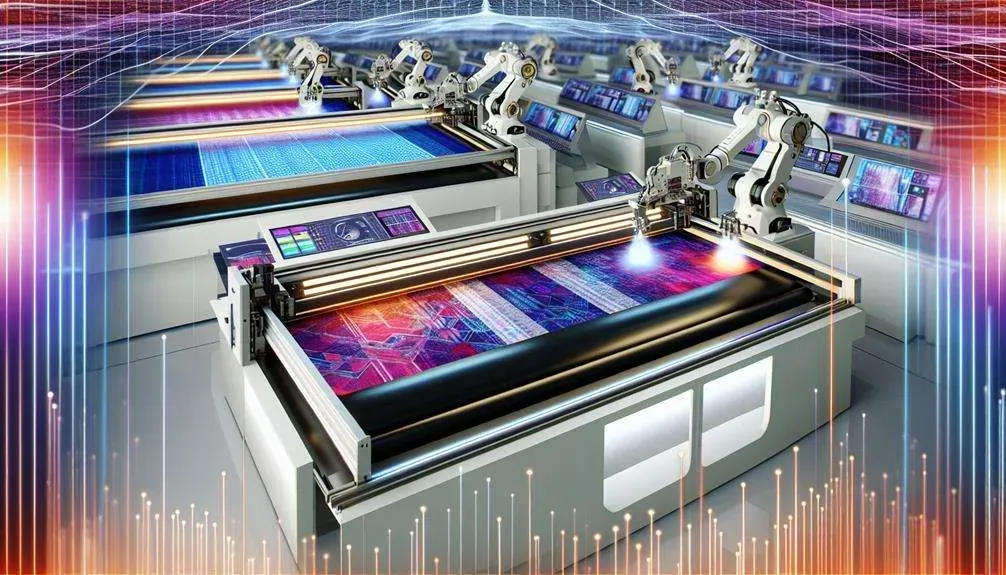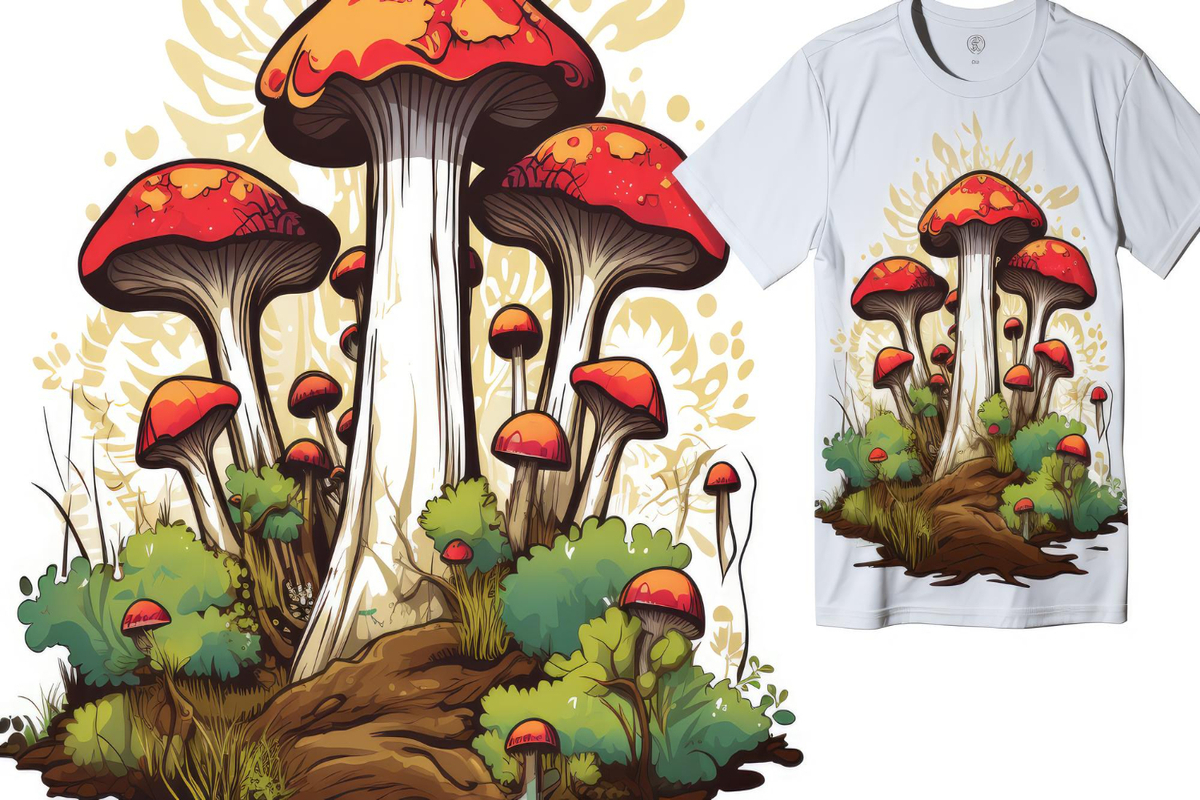DTF Transfer Technology, or Direct-to-Film transfer technology, is setting a new standard in the realm of fabric printing. This groundbreaking innovation not only enhances the quality of prints but also offers several advantages that appeal to both businesses and customers alike. As the apparel industry embraces cost-effective solutions, DTF printing emerges as a versatile player capable of handling a variety of fabrics without compromising on design intricacies. Moreover, its ability to produce vibrant colors and sharp details positions DTF favorably in comparison to more traditional methods like Direct-to-Garment (DTG) printing. In this article, we will explore the myriad benefits of DTF transfer technology while highlighting its potential impact on sustainable printing practices and the future of custom apparel.
Also referred to as Direct-to-Film printing, this innovative technology utilizes a unique process to transfer designs onto textiles with remarkable precision and durability. Known for its versatility, DTF printing can accommodate a wide range of fabric types, making it a preferred method among custom apparel providers. Many businesses are flocking to this method due to its obvious advantages, such as superior print quality and economical production capabilities, particularly for smaller runs. When comparing DTF vs DTG, many find that DTF edges ahead in terms of design flexibility and ease of use. As sustainability becomes a pressing concern, sustainable DTF printing also emerges, aligning with eco-conscious practices that appeal to modern consumers.
The Superiority of DTF Printing Quality
DTF transfer technology is celebrated for its high-quality print outputs, which often surpass those of traditional printing methods such as Direct-to-Garment (DTG) printing. By utilizing specialized inks and advanced printing techniques, DTF allows for vibrant colors and crisp details to be transferred onto a wide variety of fabrics. This results in apparel that not only looks stunning but also stands up to the test of time, maintaining its visual appeal through multiple washes. The ability to reproduce intricate designs with such precision has made DTF a preferred choice for custom apparel producers looking to deliver premium-quality products.
Furthermore, the durability of DTF prints significantly enhances their value proposition. Unlike screen prints, which can fade or crack over time, DTF technology involves a unique bonding process that ensures the inks adhere firmly to the fabric. Consequently, garments produced via DTF maintain their integrity and resist wear and tear, thus providing consumers with long-lasting products. This enduring quality has led to a noticeable shift in consumer preference, favoring DTF-printed items for their reliability and stunning aesthetic.
DTF vs DTG: A Comparative Analysis
When comparing Direct-to-Film (DTF) printing with Direct-to-Garment (DTG) printing, notable differences highlight why DTF may be the superior choice for many businesses. While both methods offer high-quality prints, DTF has the edge when it comes to versatility across various fabric types. DTF can easily be applied to cotton, polyester, and blends, allowing custom shops to cater to a broader range of customers without the need for extensive modifications to their printing setups.
Moreover, the economic advantages of DTF over DTG are significant, especially for small businesses focusing on personalized orders. DTF printing allows for smaller production runs without a hefty price tag, making it feasible for custom printers to thrive in a competitive market. This flexibility means that new brands and established businesses alike can test designs and meet niche consumer demands without the constraints typically associated with traditional methods like DTG.
Cost-Effectiveness of DTF Printing Advantages
Cost-effectiveness is one of the standout advantages of DTF transfer technology. In the apparel printing industry, traditional methods often require minimum order quantities to offset setup costs, which can be prohibitive for small businesses and startups. In contrast, DTF printing streamlines the process and allows for economical small runs, enabling custom shops to produce unique designs without significant upfront investment. This democratization of apparel printing empowers entrepreneurs to explore their creative ideas without financial barriers.
Additionally, the overall efficiency of the DTF printing process contributes to its cost-effectiveness. With quick setup times and a simplified workflow, businesses can complete jobs faster than many traditional methods allow. This acceleration not only enhances productivity but also reduces operational costs, allowing for better pricing strategies and increased competitive advantage. As a result, companies leveraging DTF printing can confidently offer customers high-quality products at affordable prices.
Versatility Across Fabric Types
One of the principal selling points of DTF transfer technology is its unrivaled versatility in printing on various fabric types. Unlike methods that may be limited to cotton or specific blends, DTF can efficiently handle a range including polyester, nylon, and mixed fabrics. This characteristic enables apparel brands to cater to diverse customer preferences, expanding their product lines without needing to invest in multiple printing methods.
This flexibility not only opens up creative avenues for designers but ensures that businesses can respond to market trends swiftly. For instance, if a new style or fabric becomes popular, brands that utilize DTF technology can quickly adapt their printing processes to incorporate these materials. Such adaptability is critical in the fast-paced fashion industry, where timely responses to consumer demand can significantly impact sales.
Sustainability in DTF Printing Innovations
As the demand for sustainable practices grows within the printing industry, DTF transfer technology is stepping up to meet these environmental concerns. Innovations in water-based inks utilized in the DTF printing process reduce harmful emissions and waste, making DTF a more environmentally friendly option compared to traditional solvent-based printing methods. This shift towards sustainability not only appeals to eco-conscious customers but also positions brands as forward-thinking and responsible.
Furthermore, the reduction in material waste associated with DTF printing enhances its sustainable credentials. The ability to print on demand eliminates overproduction, allowing businesses to meet specific customer orders without the risk of surplus stock. This linear approach to production helps lessen the overall environmental impact of apparel manufacturing, inviting more brands to consider DTF as their go-to printing technology.
Future Market Trends in DTF Printing
Looking ahead, the DTF printing market is poised for rapid growth, with industry analysts predicting a compound annual growth rate (CAGR) of 12% over the next five years. This growth trajectory is largely driven by the rising demand for custom apparel and the continuous advancements in printing technology, making DTF more accessible to businesses of all sizes. As more companies recognize the benefits of DTF transferable technology, its adoption is expected to become mainstream within the apparel sector.
Moreover, consumer trends towards personalization and bespoke fashion products further bolster the outlook for DTF printing. As consumers increasingly seek unique designs and one-of-a-kind garments, businesses adopting DTF technology can effectively meet these needs, providing high-quality, customized items in a cost-effective manner. This alignment with market desires hints that DTF technology will not only continue to thrive but will redefine standards within the fabric printing landscape.
Frequently Asked Questions
What is DTF Transfer Technology and how does it work?
DTF Transfer Technology, or Direct-to-Film transfer technology, involves printing designs onto a special film with ink that can then be heat-pressed onto various fabrics. This method is versatile and allows for high-quality prints with vibrant colors, making it suitable for many fabric types.
What are the key advantages of DTF printing over traditional methods?
DTF printing advantages include exceptional print quality, versatility in fabric compatibility, cost-effectiveness for small runs, and ease of use compared to traditional methods like screen printing or DTG.
How does DTF printing quality compare to DTG printing?
In a DTF vs DTG comparison, DTF printing quality often excels with sharper details and more vibrant colors. DTF prints are also more durable, maintaining their quality after multiple washes without fading.
Is sustainable DTF printing possible, and what does it involve?
Yes, sustainable DTF printing is achievable through the use of water-based inks and innovative practices that reduce the environmental impact. This aligns with growing consumer demand for eco-friendly solutions in the printing industry.
Can DTF Transfer Technology be used on any type of fabric?
Yes, DTF Transfer Technology is compatible with a wide range of fabrics, including cotton, polyester, and blends. This versatility makes it a favored choice among businesses for customizing apparel.
What are the cost benefits of using DTF printing for small businesses?
DTF printing allows small businesses to produce custom items economically without needing large minimum orders. This cost-effectiveness minimizes waste and helps businesses cater to personalized demands efficiently.
| Key Point | Description |
|---|---|
| Quality of Prints | Produces vibrant colors and sharp details, retaining quality after multiple washes. |
| Versatility | Compatible with various fabrics, making it ideal for custom apparel. |
| Cost-Effectiveness | Enables smaller production runs economically, reducing waste. |
| Ease of Use | Simpler and quicker setup compared to traditional methods like DTG. |
| Environmental Considerations | Incorporates eco-friendly water-based inks to minimize impact. |
Summary
DTF Transfer Technology stands at the forefront of modern fabric printing, offering remarkable advantages that position it as a leading choice for businesses and consumers alike. The emphasis on high-quality prints coupled with versatility across a variety of textiles allows businesses to meet customer demands efficiently. With a focus on reducing production costs and enhancing user experience, DTF technology simplifies the printing process even for small-scale operations. Furthermore, as sustainability becomes increasingly significant, DTF methods are adapting to utilize eco-friendly materials, reflecting a growing commitment to responsible printing practices. As the industry evolves, those who adopt DTF Transfer Technology are likely to gain a competitive edge in the ever-expanding apparel market.



